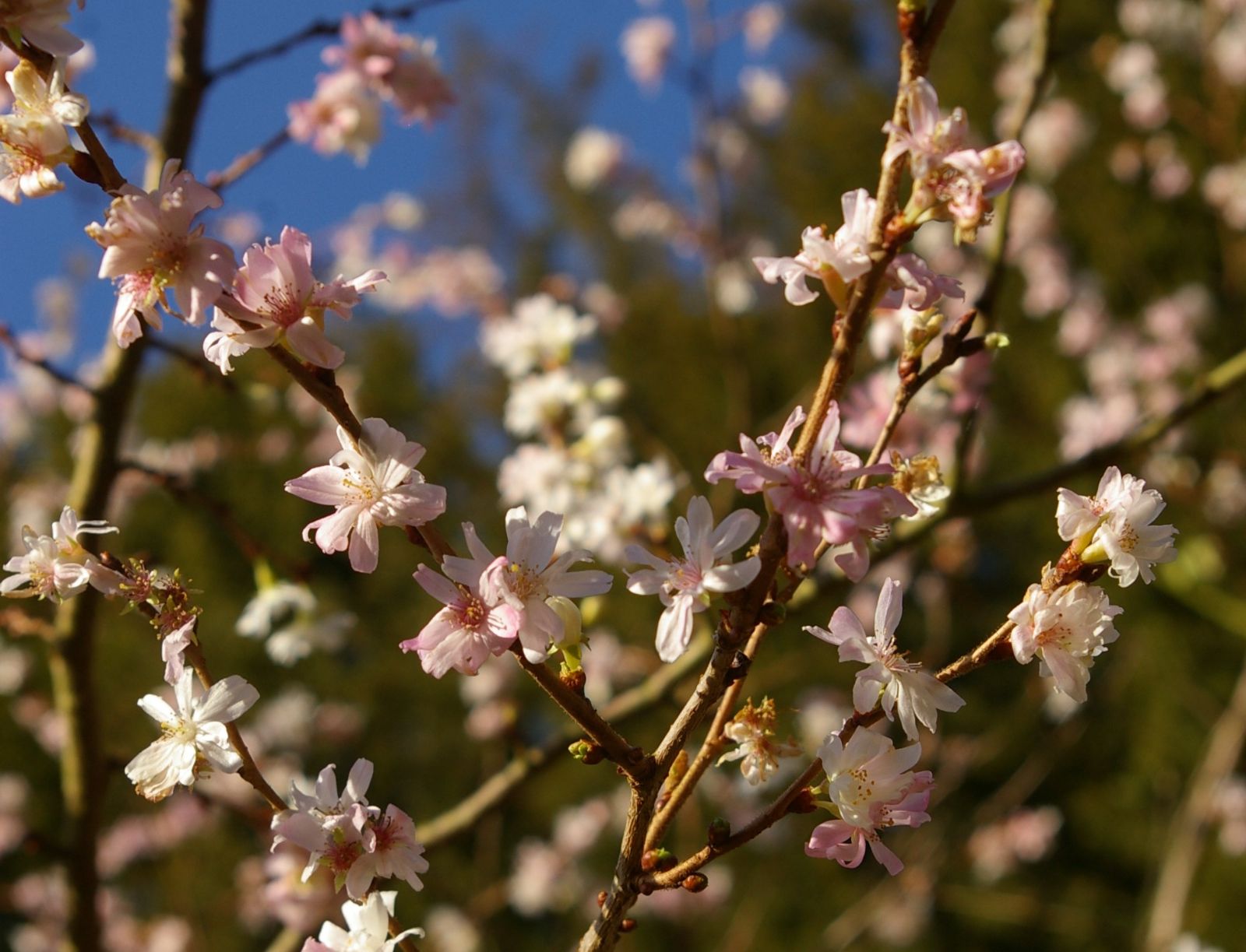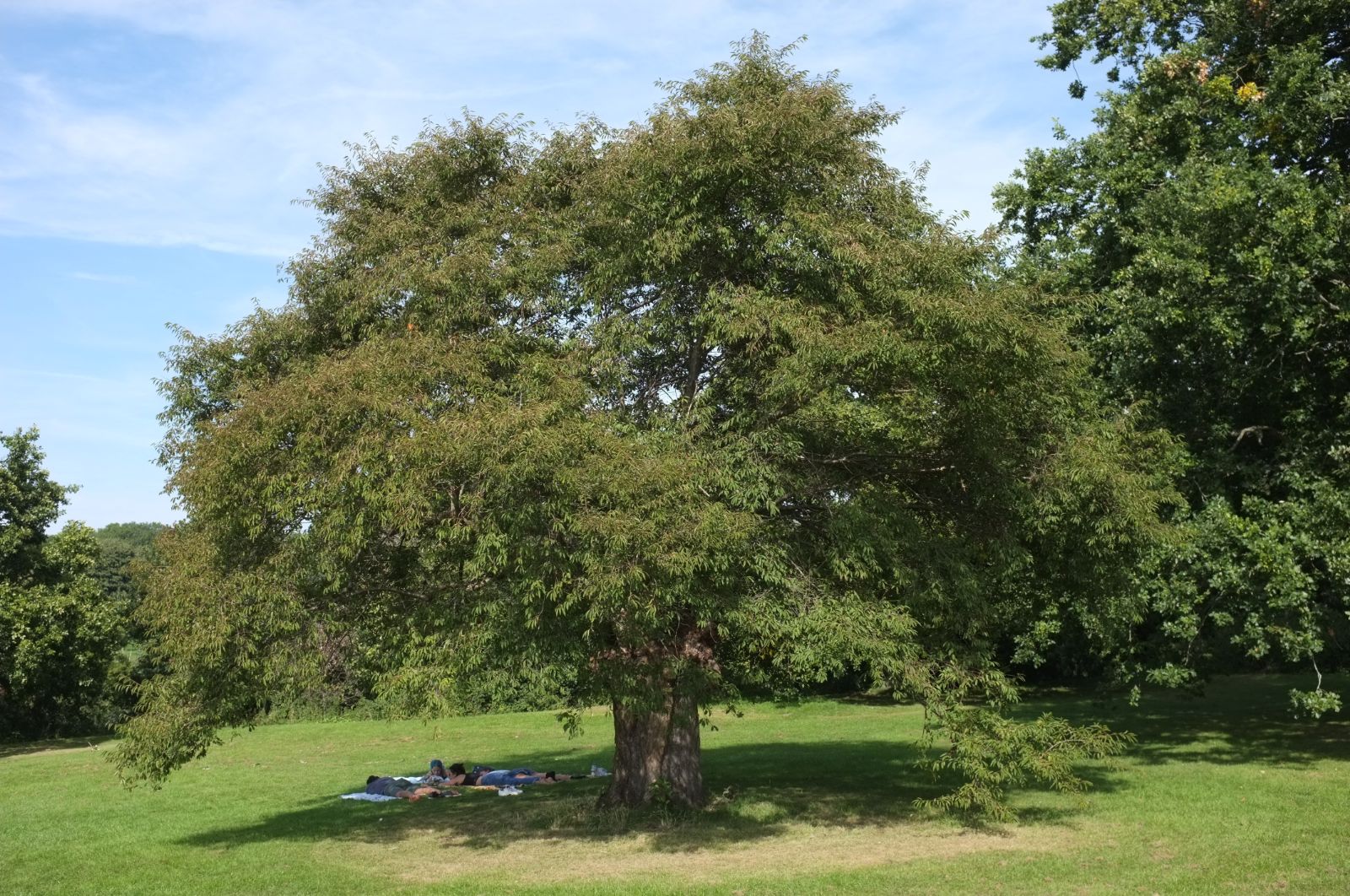Prunus subhirtella
Credits
Article from Bean's Trees and Shrubs Hardy in the British Isles
Recommended citation
'Prunus subhirtella' from the website Trees and Shrubs Online (treesandshrubsonline.
Genus
Infraspecifics
Other taxa in genus
- Prunus alleghaniensis
- Prunus americana
- Prunus × amygdalo-persica
- Prunus amygdalus
- Prunus angustifolia
- Prunus apetala
- Prunus arabica
- Prunus argentea
- Prunus armeniaca
- Prunus avium
- Prunus besseyi
- Prunus brigantina
- Prunus campanulata
- Prunus canescens
- Prunus cantabrigiensis
- Prunus cerasifera
- Prunus cerasus
- Prunus cocomilia
- Prunus concinna
- Prunus conradinae
- Prunus consociiflora
- Prunus cornuta
- Prunus cuthbertii
- Prunus dasycarpa
- Prunus davidiana
- Prunus × dawyckensis
- Prunus dielsiana
- Prunus domestica
- Prunus dulcis
- Prunus emarginata
- Prunus × fontanesiana
- Prunus fruticosa
- Prunus glandulosa
- Prunus grayana
- Prunus himalaica
- Prunus hortulana
- Prunus humilis
- Prunus ilicifolia
- Prunus incana
- Prunus incisa
- Prunus jacquemontii
- Prunus kansuensis
- Prunus lannesiana
- Prunus laurocerasus
- Prunus litigiosa
- Prunus lusitanica
- Prunus maackii
- Prunus mahaleb
- Prunus maritima
- Prunus maximowiczii
- Prunus microcarpa
- Prunus mira
- Prunus mugus
- Prunus mume
- Prunus nigra
- Prunus nipponica
- Prunus orthosepala
- Prunus padus
- Prunus pensylvanica
- Prunus persica
- Prunus pilosiuscula
- Prunus prostrata
- Prunus pumila
- Prunus rufa
- Prunus salicina
- Prunus sargentii
- Prunus serotina
- Prunus serrula
- Prunus serrulata
- Prunus sibirica
- Prunus × sieboldii
- Prunus simonii
- Prunus sogdiana
- Prunus speciosa
- Prunus spinosa
- Prunus ssiori
- Prunus subcordata
- Prunus takesimensis
- Prunus tangutica
- Prunus tenella
- Prunus tomentosa
- Prunus triloba
- Prunus virginiana
- Prunus × yedoensis
A small deciduous tree, with twiggy, erect branches, 20 to 30 ft high; branchlets hairy, especially when young. Leaves 11⁄2 to 3 in. long, scarcely half as wide; ovate, taper-pointed, sharply, unequally, often doubly toothed; downy on the midrib and veins beneath; leaf-stalk 1⁄4 in. long, hairy. Flowers in short-stalked clusters of two to five, each flower 3⁄4 in. across, soft rose-coloured, becoming paler with age, and borne on a sparsely hairy stalk 1⁄3 in. long; calyx cylindrical, with short lobes; petals notched at the end. Fruits not seen by me, but described as round, shining black when ripe, 1⁄3 in. across.
Native of Japan; introduced to Kew in 1895, and since proved to be one of the most beautiful of the cherries. It flowers from the end of March until mid-April, before the leaves appear. It is easily propagated by cuttings put in about the middle of June, when the shoots are half woody.
From the Supplement (Vol. V)
Wilson considered that P. subhirtella in the narrow sense was simply a cultivated phase of the wild P. subhirtella (Makino) Wils. (P. pendula var. ascendens Makino). However, it is very probable that typical P. subhirtella was the result of hybridisation between the wild var. ascendens and P. incisa, the latter being responsible for its smaller size, doubly serrate leaves and some other characters (also for the precocious flowering of ‘Autumnalis’). If this view were adopted, the wild P. subhirtella var. ascendens of Wilson would take the name P. pendula var. ascendens Makino (or f. ascendens (Makino) Ohwi). The amount of disruption to horticultural nomenclature that this would involve is really very slight. All the cultivars mentioned on pages 412–13 would remain under P. × subhirtella, with the exception of those referred to under var. pendula, which would have to be transferred to P. pendula Maxim. It should, however, be noted that the very pendulous clone often called P. subhirtella ‘Pendula’ should be called ‘Pendula Rosea’, since the cultivar name P. pendula ‘Pendula’ would belong to the tall-growing tree with cascading branches on which Maximowicz was unwise enough to base the name P. pendula Maxim.
'Autumnalis'
A small, spreading tree up to about 25 ft high and as much or more in width. Flowers semi-double, pink in the bud, opening almost white, about {3/4} in. wide, the stamens pinkish darkening to crimson as the flowers fade, giving a bicolour effect. They usually start to appear in November, and the main display is usually before the hard weather sets in, and sometimes again in the early spring.’Autumnalis’ was apparently first distributed commercially in this country by the Daisy Hill Nursery around 1910, but a tree imported direct from Japan was planted at Borde Hill in Sussex some ten years earlier and must have been the largest in the country until it was smashed by a falling tree in the early 1960s; in 1933 it was 25 ft high and 42 ft in spread. It was at first grown under the name P. miqueliana.’Autumnalis’ received an Award of Merit when shown from Borde Hill in 1912 as “P. miqueliana”, and an Award of Garden Merit in 1924.'Autumnalis Rosea'
Resembling the preceding, but with pale pink flowers. A.M. 1960.
'Fukubana'
Flowers with twelve to fourteen notched petals, crimson in bud, opening deep pink. Introduced from California by Collingwood Ingram in 1927. It flowers over a period of some weeks from early April. It is perhaps not the same as P. subhirtella var. fukubana, shortly described by the Japanese botanist Makino in 1908; Wilson gives Makino’s name as a synonym of P. subhirtella var. autumnalis. A.M. 1938.P 'Accolade'
See under P. sargentii.P 'Hally Jolivette'
A small tree of dense, rounded habit with narrow-ovate, tapered, sharply toothed leaves, hairy above and more densely so beneath; leaf-stalk reddish. Flowers double, pink in the bud, opening white, about 1{1/4} in. wide, borne over a period of two weeks or more in late April or early May. It is unlikely to exceed 15 ft in height. It was raised at the Arnold Arboretum, USA, by Prof. Sax, the parentage being P. subhirtella back-crossed onto a hybrid between P. subhirtella and P. × yedoensis.P 'Pandora'
Flowers single, about 1{1/4} in. wide, petals pale pink with a deeper edge. Flowering-time early April. A beautiful, very floriferous cherry with ascending branches, making a narrowly vase-shaped crown. It was raised by Messrs Waterer of Bagshot and received an Award of Merit in 1939, and the Award of Garden Merit in 1959. The parentage is P. subhirtella crossed with P. × yedoensis, and the second parent seems to predominate.
'Rosea'
A selection of P. subhirtella with rose-pink flowers.'Stellata' ('Pink Star')
Flowers single, larger than in the type, with narrow-oblong petals. The flower clusters are set so close together at the ends of the branchlets that they seem to form a single panicle. This variety was raised by the American nurseryman W. B. Clarke and originally named ‘Pink Star’, but Collingwood Ingram gave it botanical status in Ornamental Cherries as var. stellata. It is depicted in that work in Fig. 26.The following hybrids have P. subhirtella as one parent:var. ascendens (Mak.) Wils.
Synonyms
P. pendula var. ascendens Mak.
P. aequinoctialis Miyoshi
var. pendula (Maxim.) Tanaka
Synonyms
P. pendula Maxim. Shidare-Zakura
A cultivated race of Japan, differing from the wild prototype (var. ascendens) only in its habit; the main branches are arching and spreading, the branchlets pendulous. In its homeland, where it is planted in gardens and temple-grounds, it builds up into a tall, rather tortuously branched tree. But in Britain, it makes a weeping tree of umbrella-like form and does not rise much above the point of grafting. The usual form – ‘Pendula Rosea’, often called ‘Pendula’ simply, the flowers are flesh-pink (indeed the epithet carnea would be more appropriate and was once in use at Kew). It was introduced to Britain around 1870 and originally known as Cerasus japonica pendula or Cerasus pendula rosea. A.M. 1930. In ‘Pendula Rubra’ the flowers are a deeper pink and the leaves lanceolate; there is a double row of this variety at Kew leading up to the door of the Temperate House.Another weeping variety is ‘Pendula Plena Rosea’, introduced by Collingwood Ingram in 1928 from the Heian-Jingu temple, Kyoto. It resembles ‘Pendula Rubra’, but the flowers are double.







